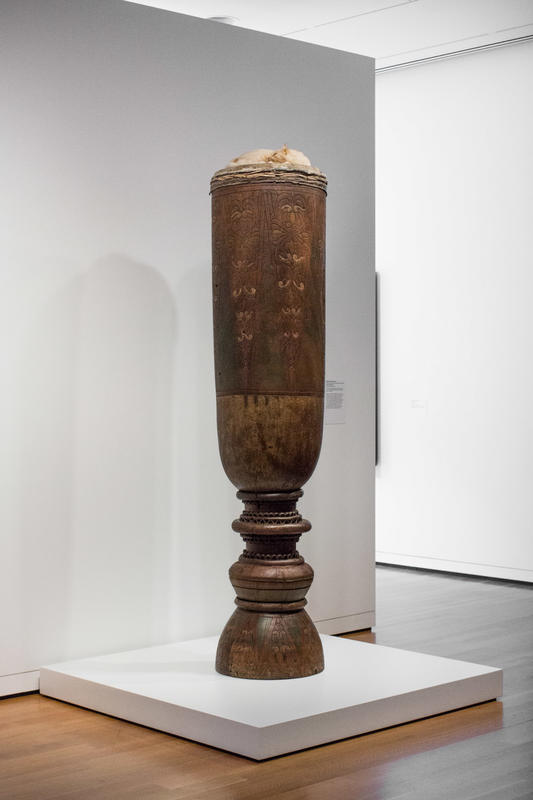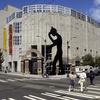More about High Level of Cat

Contributor
High Level of Cat by David Hammons is the artist's expression of disgust, disdain, joy, humor, and, most of all, a direct challenge to audiences, curators, and writers.
Like Warhol and Duchamp, Hammons' entire life of relative silence toward journalists has become an essential part of the work itself, and his supposed "elusiveness," a journalist's code for "I give up on Hammons," is his love of the game. The game is, as Warhol often said, to bring home as much money as possible, and an artist accomplishes this goal by minimizing the amount of labor per work. "The less I do, the more of an artist I am," Hammons says.
In the society of "work hard and make it to the top," the philosophy of Hammons, while complementing the Tao Te Ching, Warhol, Duchamp, and Ai Weiwei, 艾未未, simply "does not fit," just as his Higher Level of Cat, a taxidermied cat perched on a long drum, fits neither in a gallery nor in a museum, especially without some kind of explicit rationale by the artist revealing the "deeper meaning behind the work," as if the work needs an apology. By letting writers and audiences do the critical part, Hammons refuses to fit into an art market which expects artists to also be philosophers and historians of art, and give away that history and philosophy for free in order to escape their self-imposed poverty. The occupation of the artist is a "poverty trip," says Hammons, who grew up in a family of ten children. The irony is that Hammons works are exorbitant in price: "his glass crystal basketball hoop adorned with chandeliers...sold for $8 million in 2013, putting him among the top ten priciest living" artists in the U.S.
Hammons stands out because he has the integrity to let the work speak for itself, and to make the work speak in as little verbal, linear, digestible language as possible. It's about building something that works, but is also a little bit off, like music made by hand on an electronic sequencer: the way Black people in Harlem make things by hand, like doors and windows, Hammons says, is functional but a "thirty-second of an inch" off. "Nothing fits, but everything works."
So what does High Level of Cat mean? Maybe that's not the right question. What is meaning, that a society built on slavery can agree on, anyway? Certainly there is meaning there, and it has to do with the museum being an institution, a place which tries to fix things and preserve them in space and time, like a taxidermist. It also has to do with jazz language, people calling each other "cat": the wildcat, the mountain lion, and the tiger, the animals that are sovereign, that eat all the smaller animals, in domesticated form, perching on top of the drum, the only language that made it through the Middle Passage intact: the rhythm of speech, the turn of a phrase, the syncope and the syncopation.
When slave owners forced their slaves to bear their children, they complicated the notion of "white" by crossing paths of DNA–for this reason, Adrian Piper writes most "white" U.S. citizens, whose families were in the U.S. before 1865, have African ancestry. It is this occult, lower level which, in part, brings the work of Hammons, including Higher Level of Cat, to a higher level–it's a handmade object, a symbol of an ancestor's handiwork, the handiwork that built the U.S. on indigenous land.
Sources
- "From an Interview with David Hammons," UbuWeb, 1986, http://www.ubu.com/papers/hammons_interview.html.
- Melrod, David. "Harmolodic Ingenuity: David Hammons Marks an Immersive Return to Los Angeles at Hauser & Wirth." Tribes, Jun. 18, 2019, https://www.tribes.org/web/tag/David+Hammons.
- Piper, Adrian. "Passing for White, Passing for Black." Transition 58 (1992): 4-32.
- Stern, Steven. "A Fraction of the Whole." Frieze, Mar. 12, 2009, https://frieze.com/article/fraction-whole.











